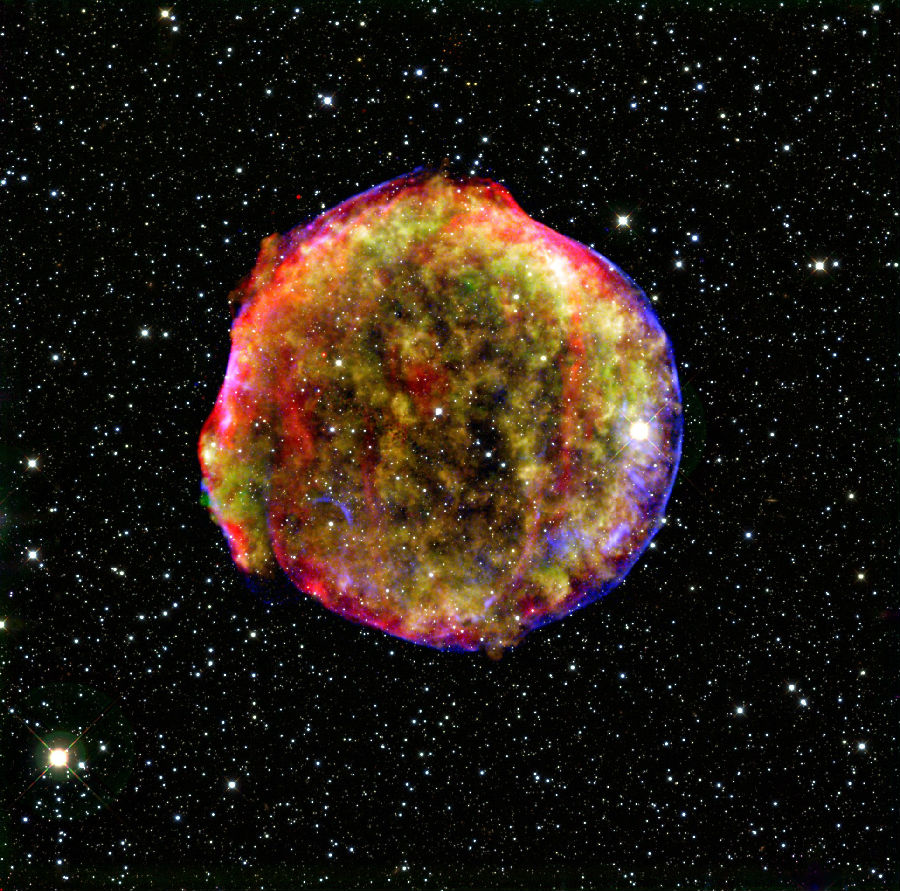During the blast of a supernova, the inner core of a star collapses into a single point.
在“超新星”爆炸过程中,恒星的内核会塌陷成一个小点。
Smaller than a pinhead.
比针头还小的点。
Astronomers call this single point, a "singularity".
天文学家将这个小点称做“独点”。
A singularity is an object with no length, width or height.
“独点”是个没有长、宽、高的物体。
Yet it retains most of the gravity of the original star.
但是它保留了原来恒星的大部分重力。
One of the primary goals for Hubble was to prove once and for all whether or not black holes exist.
发射哈勃的主要目标之一就是断然的证明黑洞是否存在。
But how does one search for an invisible point?
但是如何找寻一个看不见的点呢?

Astronomers decide to direct Hubble to examine the exact centers of galaxies.
天文学家决定把哈勃对准星系的中心进行观测,
It is a wise decision.
这是个明智的决定。
What they discover is that the stars close to the center of galaxies zoom around at very high speed.
发现的结果是:靠近星系的中心的恒星都在围绕着进行高速旋转。
This is not how stars normally behave.
这不是恒星正常的状态。
Most stars move along at relatively slow speeds.
大多数恒星都以相对较慢的速度运动。
But down in the central hub of galaxies stars are being thrown around by the gravity of something that is massive, yet ultra compact.
但是在星系的中央,恒星被抛来抛去的,这肯定是因为有质量超大而且体积超小的东西存在。
There can only be one cause for this effect.
只能有一个理由来解释这种现象:
The fabled black hole.
传说中的黑洞。
Further evidence of black holes comes from Hubble's images of a mysterious jet some 5,000 light-years long.
更多关于黑洞的证据来自于哈勃拍摄的神秘的、5000光年长的喷射柱。
The jet is piercing the heart of a giant elliptical galaxy called M-87.
这个喷射柱穿过了一个叫做M-87的椭圆星系的中心。
The jet in the galaxy M87 is caused by enormous amounts of gas and dust piling onto the black hole.
在星系M87中的这个喷射柱是由堆积在黑洞上的巨量气体和尘埃构成。
There's so much material that a traffic jam occurs.
物质太多,都发生拥堵了。
The gas and dust back up, forming a disc.
气体和尘埃退了回去,形成了一个碟形。
Some of this material escapes and creates the jet.
一些物质逃逸了出去,并形成了喷射柱。
The black hole is showing itself with a parade of light.
黑洞以光的形式展示了自己的存在。












